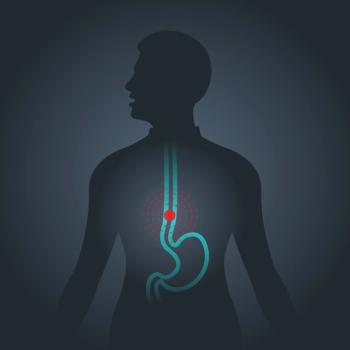
- ONCOLOGY Vol 16 No 9
- Volume 16
- Issue 9
New Drug Regimen Shows Clear Benefit in the Treatment of Advanced Colorectal Cancer
Patients with advanced colorectal cancer who received the FOLFOX4 regimen (fluorouracil [5-FU], leucovorin, oxaliplatin [Eloxatin]) responded significantly better to treatment, had fewer severe side effects, and lived months longer than did patients
Patients with advancedcolorectal cancer who received the FOLFOX4 regimen (fluorouracil [5-FU],leucovorin, oxaliplatin [Eloxatin]) responded significantly better to treatment,had fewer severe side effects, and lived months longer than did patients whoreceived the standard IFL regimen (irinotecan [CPT-11, Camptosar] 5-FU,leucovorin), according to the initial results of a phase III trial presented atthe 38th annual meeting of the American Society of Clinical Oncology.
Dr. Richard Goldberg, principal investigator for the trialand a medical oncologist at the Mayo Clinic in Rochester, Minn, said, "Onour study, 71% of patients who received the FOLFOX regimen were alive 1 yearafter starting treatment, compared to 58% of patients who received the standardIFL therapy."
The trial, N9741, sponsored by the National Cancer Institute(NCI) and conducted by a network of researchers led by the North Central CancerTreatment Group and the Mayo Clinic, compared three drug regimens: (1) thestandard (control) IFL or Saltz regimen, (2) the FOLFOX4 regimen, and (3)irinotecan plus oxaliplatin.
FOLFOX4 Showed Early Promise
In a planned interim analysis of data from 795 patients whowere enrolled between March 1999 and April 2001, researchers found that outcomesfor patients receiving FOLFOX4 were significantly better than for those in thecontrol arm. Patients in the FOLFOX4 arm lived about 4 months longer thandid those in the IFL arm (median survival: 18.6 vs 14.1 months). They also had asignificantly better time to tumor progression (median: 8.8 vs 6.9 months) andhigher response rates (38% vs 29%). In addition, patients receiving FOLFOX4experienced less toxicity, although many patients who take oxaliplatin develop aneurotoxicity that is unique to the drug.
Accrual to all arms of the trial except FOLFOX4 has beendiscontinued in light of the recent trial results. Patients already enrolled inone of the other two arms will be offered the option of switching to the FOLFOX4arm in consultation with their physicians.
Investigators noted that the survival advantage for FOLFOX4 patients may, inpart, be due to second-line therapies. Irinotecan is commercially available andwas prescribed for 52% of patients after FOLFOX4 failed to further controldisease; oxaliplatin, which at the time was not commercially available, wasprescribed for only 17% of patients after IFL. These differences in second-linetherapy may account for some part of the observed difference in survival.
Articles in this issue
about 23 years ago
The Molecular Basis of Cancer, 2nd Editionabout 23 years ago
Management of Anemia in Patients With Cancerabout 23 years ago
Commonly Used Quality of Life and Symptom Measurement Scalesabout 23 years ago
Iron and the Anemia of Chronic Diseaseabout 23 years ago
Diagnosis and Management of Aplastic Anemia and Myelodysplastic Syndromeabout 23 years ago
Recombinant Human Erythropoietin in Cancer-Related Anemiaabout 23 years ago
When Is it Justified to Treat Symptoms? Measuring Symptom BurdenNewsletter
Stay up to date on recent advances in the multidisciplinary approach to cancer.




















































































